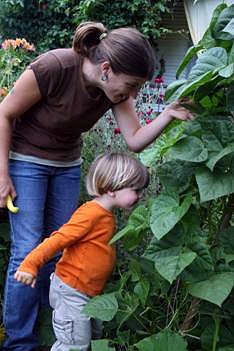
Years back, I took my Second Grade class to Slide Ranch in Marin, a working educational, ecological farm. There, we visited the hen house and observed the hens sitting calmly on their nests. One clucked and strutted away, revealing a perfect, white egg. I directed Adina to pick it up and bring it to us. She did so tenderly, held it up and asked, "is this a real egg?" A Slide Ranch teacher took the egg, placed it in a Safeway egg carton and showed the class. "Oooohhhhh," they all said, "it is real."
Many of today's children do not know where their food comes from. They have spent too little time out in farms and gardens to make the connection between picking tomatoes and salsa, between chickens and eggs. They have spent too little time in woods and fields to deeply appreciate predators and prey, the web of life, tracks and scat -- and tree forts.
When I teach a Zoo School class at the Oakland Zoo, I am amazed by the wealth of factual knowledge the students have about animals. Animal Planet has created generations of zoological geniuses. They can name an exotic animal species like an expert, but can't name the plants or animals in their own habitats. They seem to be void of hands on, three dimensional experiences in nature.
As I tour students around the zoo grounds, we observe magnificent creatures: tigers, elephants, monkeys, giraffe, but it is the backyard animals that get visiting youngsters most excited. While checking out a dream view of the male lion, lying in the sunshine, mane, paws and teeth exposed, a child will ignore the cat and scream, "Lizard!!!!" at the sight of a plain, brown, tiny lizard on a rock. The same holds true for the many birds, squirrels, hummingbirds and butterflies that cross our path on a zoo tour. Nothing is more exciting then seeing a gopher popping out of his hole. Nothing.
